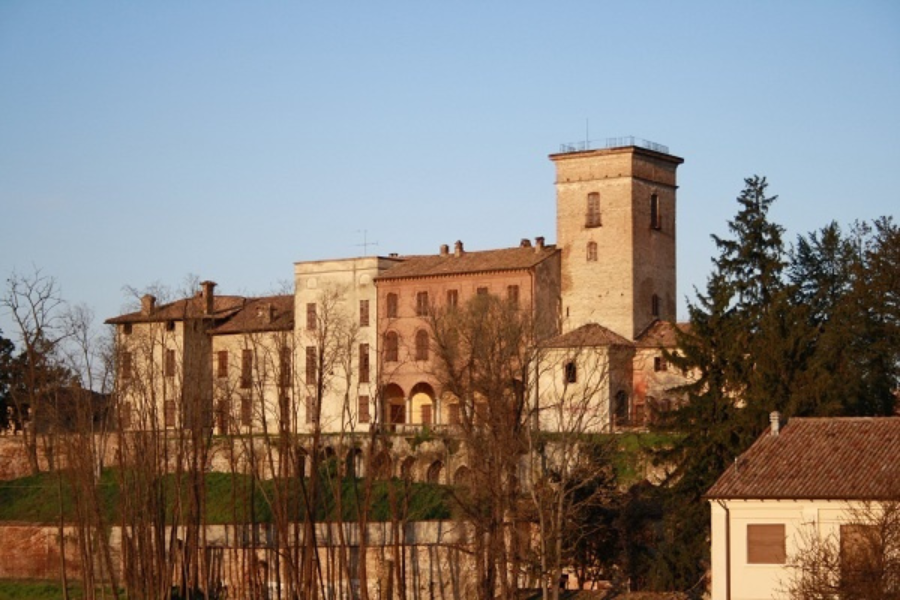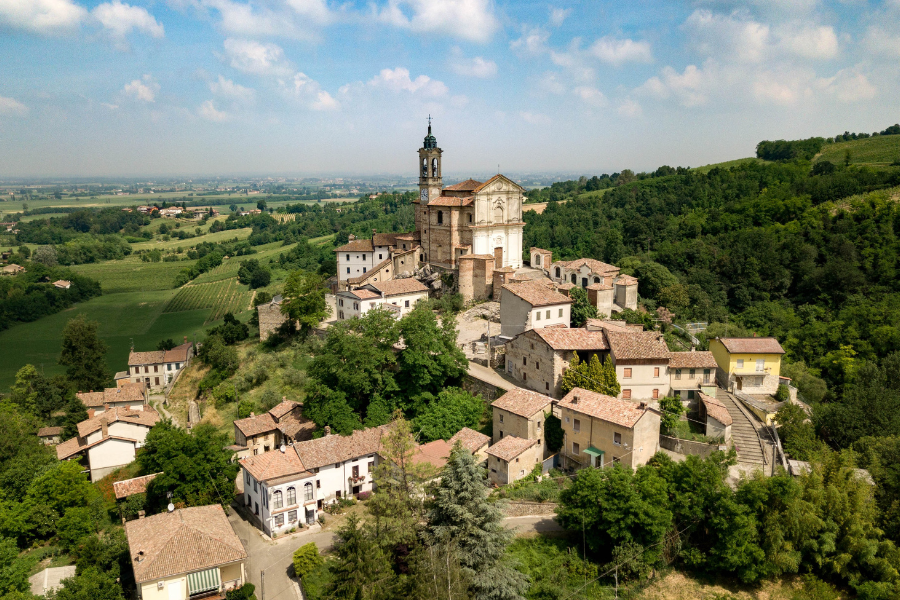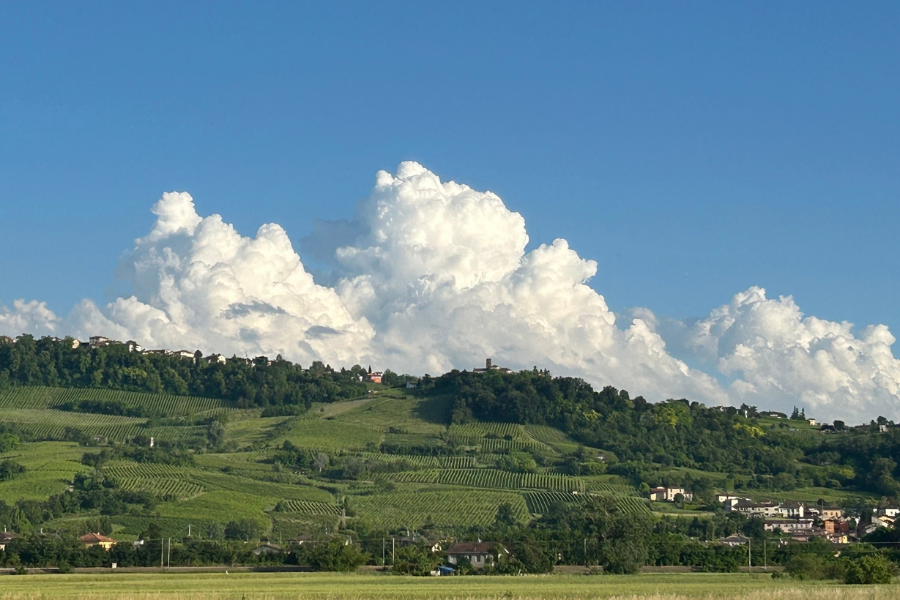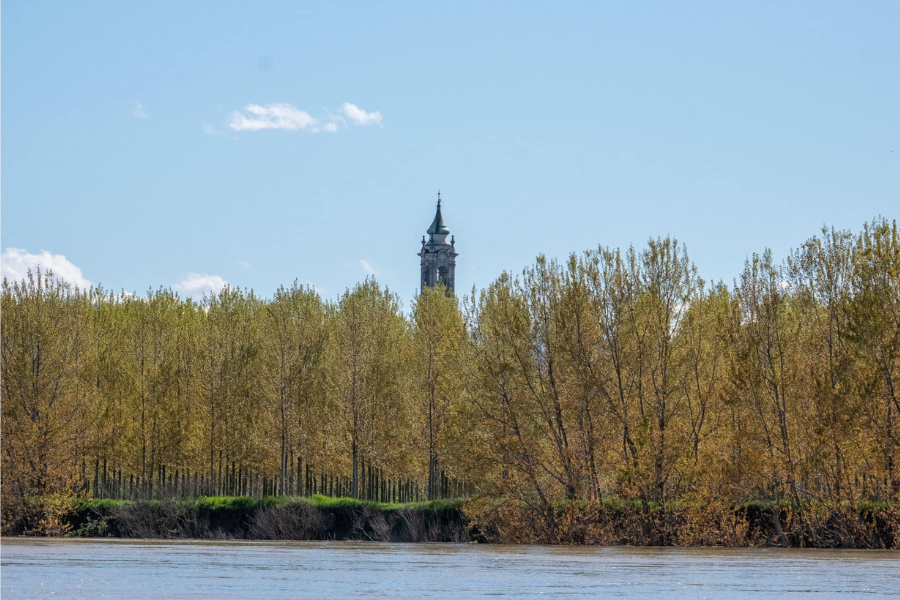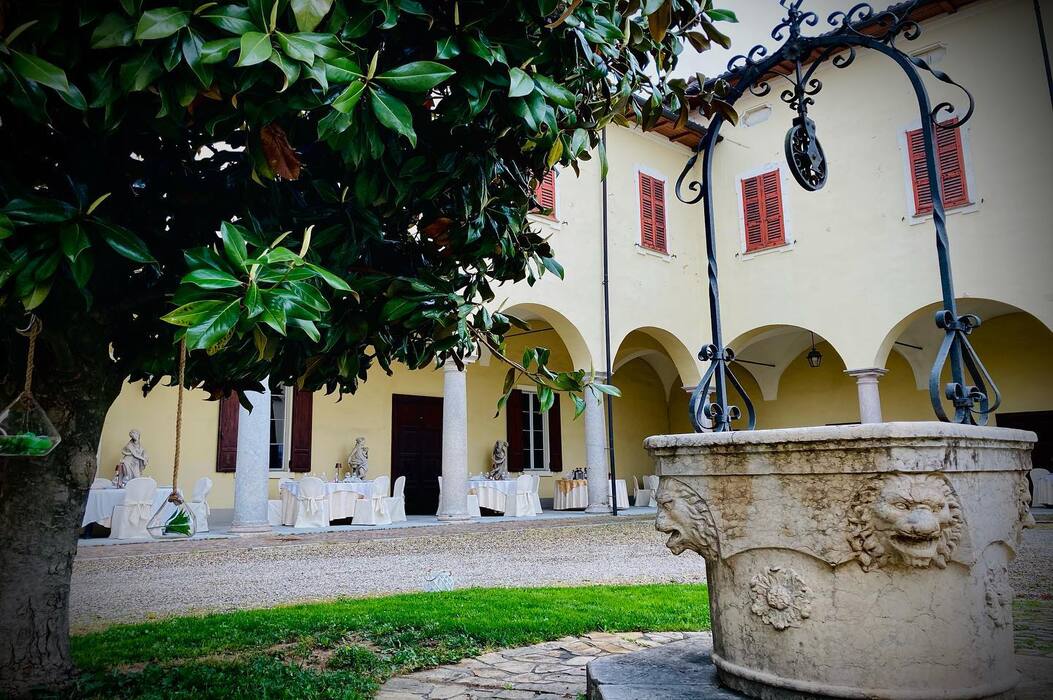The ancient and mysterious soul of Pietra de’ Giorgi
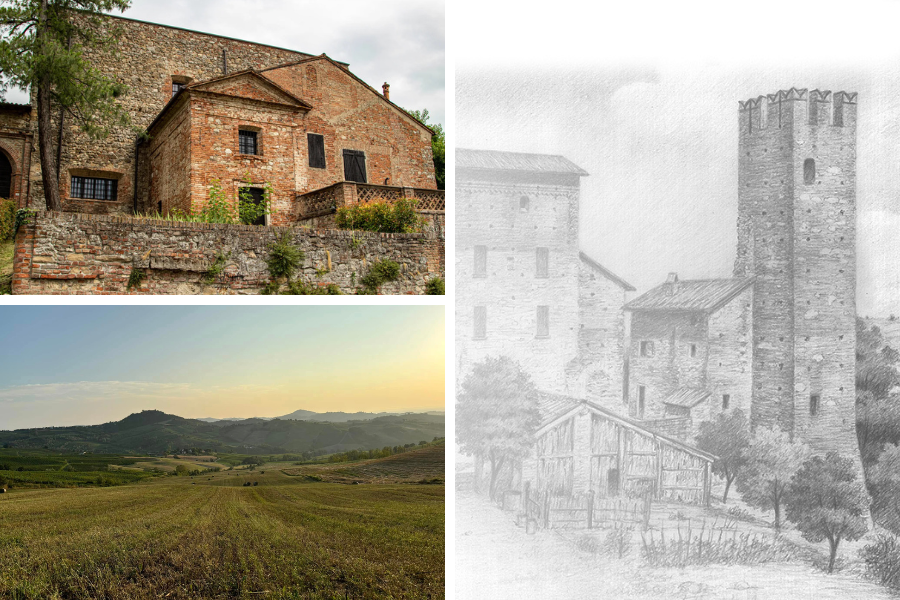
In the silence of the Oltrepò Pavese hills, among tidy rows of vines and shady woods, Pietra de’ Giorgi reveals an ancient and mysterious soul. It is a high-altitude village dominating the Scuropasso valley, where history and legend blend in a landscape capable of enchanting those who love secret Italy, the one to be lived slowly.
Cover images taken from the Pro Loco Pietra De’ Giorgi Facebook page and Donna Vagabonda’s blog.
Feudal history
Mentioned as early as 1164 in a diploma of Frederick Barbarossa, Pietra, or La Preda, as it was called in the Middle Ages (and its inhabitants are called Predalini) has always been fought over by great families: from the Sannazzaro to the Beccaria, up to the Giorgi di Vistarino, from whom the present name Pietra de’ Giorgi derives.
The village was the scene of sieges, rebellions and hereditary transmissions, as happened in 1405 when the castle passed to Galvagno Beccaria, councillor of the Visconti.
The ancient municipality also included Predalino and Pecorara, today hamlets, but once autonomous centres.
The thousand-year-old castle and the mystery of the Roman busts
🏰The imposing Pietra de’ Giorgi Castle is among the oldest castles in the Oltrepò, probably dating back to 1012.
The defensive structure today encloses the town hall and preserves towers, Ghibelline merlons, an oratory-ossuary and even a 75-metre-deep well.
Among the things that fascinate visitors the most are three Roman busts made in the 1st century AD from marble and sandstone.
They are set between the church of Santa Maria Assunta and the Oratory of Our Lady of Sorrows: according to tradition, they depict Meteliano Massimo Orsini, his wife and son miraculously saved by the Madonna who appeared in a local wood.
Traces of the past
⛪The Church of St Mary of the Assumption, founded according to legend in 1300, was the scene of wars and reconstructions. Plundered in 1706 by Austrian troops, it was rebuilt thanks to funds hidden by the parish priest.
Its high altar, dated 1730, is in red Verona marble.
A tombstone of the Roman legion XLII is preserved under the bell tower, a sign of a much older settlement.
Predalino had another castle in the locality that is now called Castellone.
Until the middle of the 18th century, there was still a ruined tower to testify, but today unfortunately there are no traces of this stronghold.
Noble villas
The historic centre of Pietra de’ Giorgi is a little treasure to explore on foot:
- in Piazza Unità d’Italia, the modern statue of Saint Anthony Abbot (2013) coexists with the town hall, a former noble residence
- in Via Porri are the Belcredi and Pecorara palaces, with their stately façades
- in the hamlet of Castagnara, there is the complex of the Church of Santa Maria Assunta and the Oratory of Our Lady of Sorrows (17th century), with symmetrical architecture and underground rooms used as ossuaries.
The wonders of Pecorara
Two noble buildings stand in the hamlet of Pecorara, the former municipal seat:
- Palazzo Bellisomi, with frescoed vaulted ceiling rooms
- Palazzo Busca, on the same courtyard
- Next door is the Dallera House, built in 1790, which was the seat of the municipality until the suppression of Predalino.
The excellence of Oltrepò wines
🍷Pietra de’ Giorgi is immersed in the Oltrepò wine-growing area. Among the wineries in the area:
- La Barosina
- Favot House of Fraschini Emilio
- Tenuta Calc ababbio in the hamlet of Calcababbio. It is also a location for conferences, seminars, weddings, baptisms, communions
- Scuropasso Winery, in Scorzoletta
- Ferrari Dario and Alberto, in the hamlet of Casa Bernazzi
- Predalino in Cerrone
- Antonio Della Bianca at Canova
Popular traditions and events not to be missed
The calendar is full of events often organised by the Proloco of Pietra de’ Giorgi, linked to agricultural and religious traditions; some take place outdoors, others in the evocative Medieval Cantinone, once a prison and then a stable. Here are some of them:
- Feast of Saint Anthony Abbot – 17 January
- Salami Festival – first Sunday in July
- Ferragosto in the hills – 14, 15 and 16 August
- Agriculture Fair – first Sunday in November
- Artisan Christmas Markets
Useful information
How to get there: Pietra de’ Giorgi is easily reached by car from Broni, Casteggio or Santa Maria della Versa.
Tourist information centre:
- Municipality of Pietra de’ Giorgi – tel. 0385 85110
- Cantinone Medievale – Piazza Don Valentino Arpesella – municipal museum
Accessibility: some areas of the historic centre and public buildings are accessible to people with disabilities; best to contact in advance for confirmation.
Pietra de’ Giorgi is located right on the 45th parallel North, the Parallel of Wine!
Wine lovers will find themselves in just the right place. 🥂

 Save your favorite events
Save your favorite events




